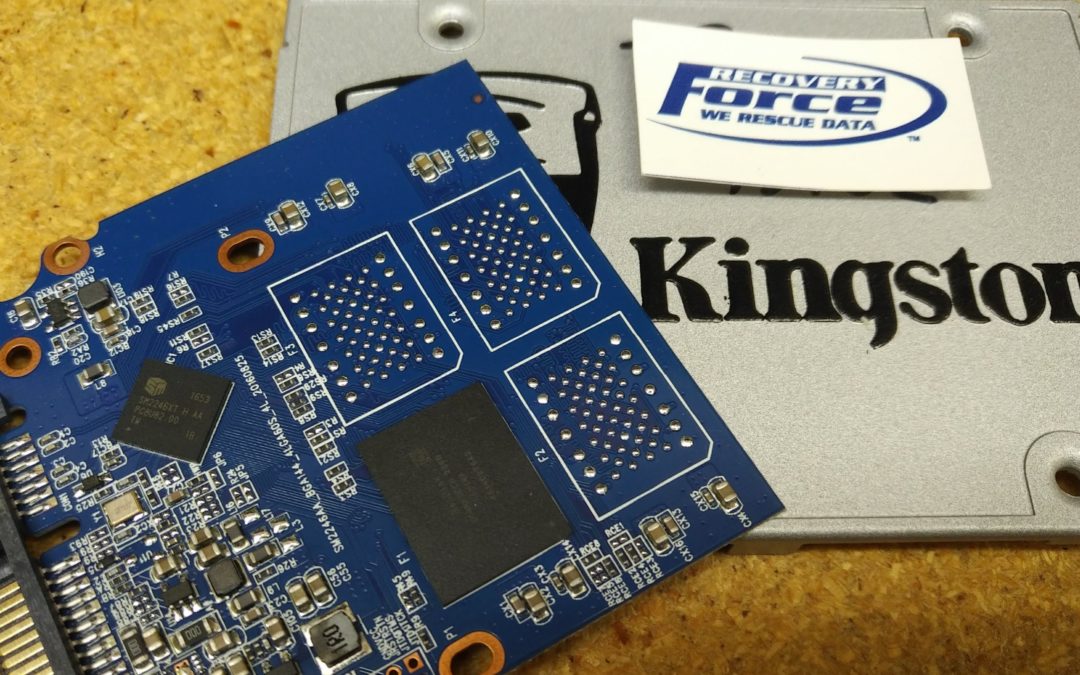With the decline in price and incline in capacity, we are starting to see more and more solid state drives (SSDs) being used instead of the traditional hard disk drive (HDD). In most cases, this isn’t a bad thing as SSDs offer significantly faster performance, springing new life in an old system, use less power and are lighter than the HDD equivalent. Also, because of the lack of moving parts, SSDs are less prone to physical damage by being bumped or jostled while being moved around, making them perfect for laptops and tablets.
That all said, we have some major concerns with the adoption of SSDs.
- NAND chips (the SSD equivalent to the platter for storing data) are typically really poor in quality. They are so bad that the controller spend a lot of its time calculating the actual sector contents using error-correcting code (ECC) to ensure that the correct information is being delivered. In essence, just because the SSD looks like it is perfectly healthy, it likely reading almost every sector bad and reconstructing it on the fly so that you don’t see how bad it really is. So, when an SSD fails, a lot of the time, it is truly because of the poor NAND chips are so bad, the controller just can’t keep up with the calculations any more.
- SSDs fail very fast, without warning. It is very easy to have a perfectly healthy SSD one minute and the next have a completely dead (and possibly unrecoverable) SSD the next
- End users understand SSDs as being invincible. Most end users think that HDDs mostly fail because of the moving parts and by moving to SSD, they are no longer in risk of failure. As a result, users are not making regular backups or any backup at all, leaving them in a really bad spot when their SSD fails
- SSDs are not easy to recover data from. Even in a case of a simple file deletion, many SSDs are configured with a setting called TRIM enabled. Normally, when a file is deleted on an HDD, the file table record is deleted, but the file contents remain on the platter until new data overwrites it. With TRIM enabled, that space is not only marked as available, TRIM goes further and erases it, making recovery of those files impossible. Now, when it comes to physical issues where the SSD stops responding or detecting because of bad NAND, it requires very expensive tools and known algorithms to bypass the controller to access the firmware and virtually replicate the controller (overly-simplified explanation) in order to directly access the data stored on the NAND chips. But, thanks to the really poor quality NAND and the virtualization procedures, rather than read an SSD at over 200MB/second without errors, we are lucky to read at 5MB/second with a very high percentage of unrecoverable read errors which leads to a low quality data recovery job.
- SSDs with built in encryption in the controller (ie, SandForce controllers) are very, very expensive to recover, if recoverable at all.
A couple examples of SSD cases we have recently worked on:
256GB Kingston SSD with an SM2246XT controller
- Would not detect (stuck in a BSY state for those who know what we are talking about)
- Through a process that takes 45 minutes for each time we had to repower the SSD, we had to virtually rebuild the translator (a table that tells us what sector is where)
- We were able to image 89% of the sectors from the SSD
- The MFT (file table) was only 75% readable
- Of the files we could see from the partial MFT, only 81% of them weren’t damaged from errors
- If we look at the amount of good files vs bad, based on size of files, only 32% were good
- Because of the damage, the target QuickBooks file needed to be recovered was unrecoverable
480GB ADATA SP550
- Keeps freezing when trying to copy files
- SSD is very unstable and locks up after being on for about a minute
- Using a DeepSpar Disk Imager we started imaging the SSD on Nov 15, 2017, with configurations to repower the drive every time it stops responding and to skip ahead when encountering bad sectors. It is still going today and at 2 1/2 months, we have read 22% of the drive, suggesting that the entire process, before a cleanup pass & file system recovery, will take over 345 days to complete
If you are using a SSD to store your files, make sure you back them up regularly and verify that the backup is good and has everything that you would need, should your SSD fail.
Although SSD recoveries can be expensive, they tend to be considerably less expensive at Recovery Force. There are some labs who offer a price range, such as $700 to $2700 USD (roughly $850 – $3300 CAD), most SSDs recovered by Recovery Force are either $350 for a minor recovery and $900 for a major recovery…in Canadian Dollars.
Should you or someone you know be in the situation where your SSD has failed and your data is not accessible, contact Recovery Force at 866-750-3169.

Nice user friendly article.